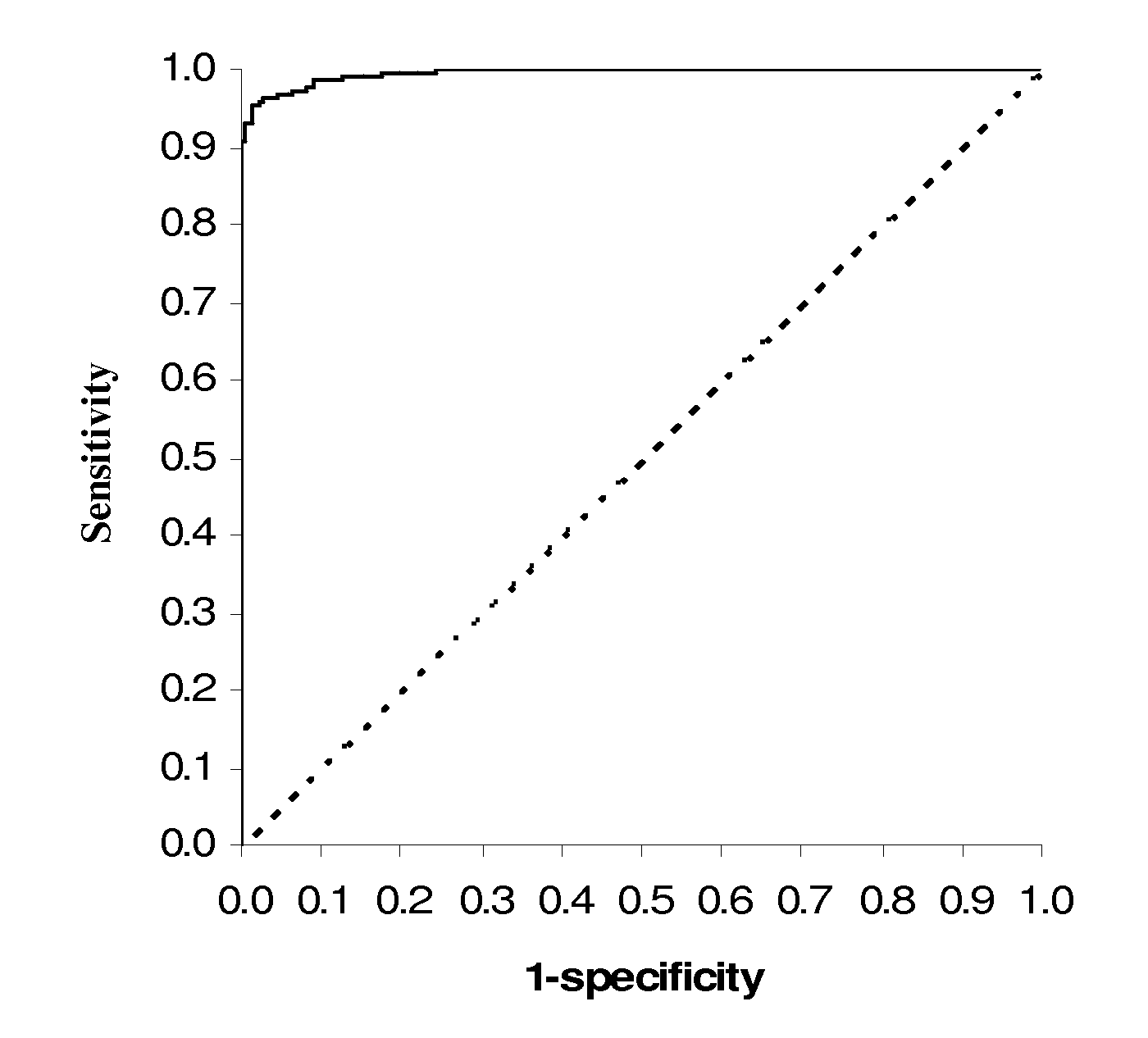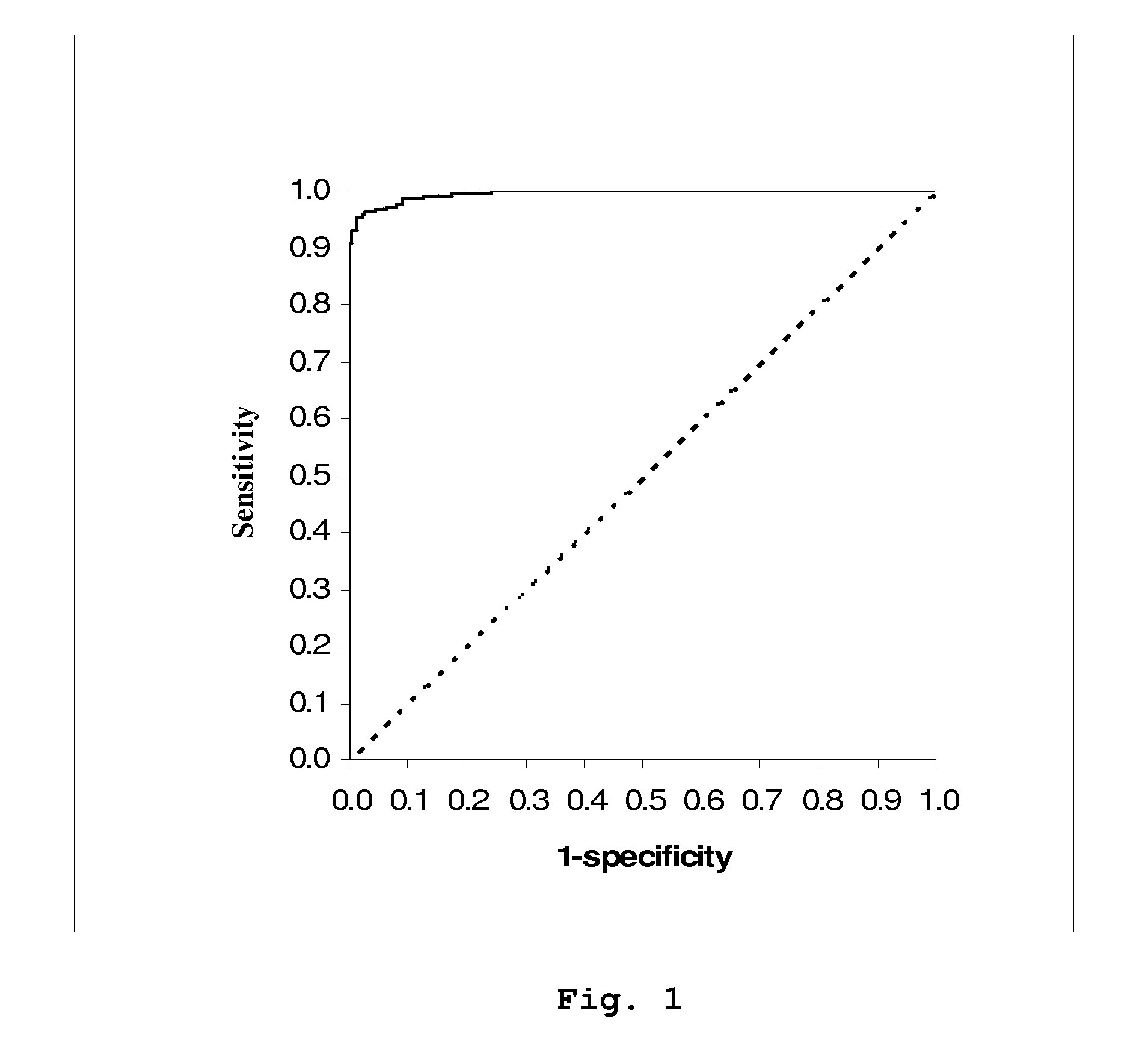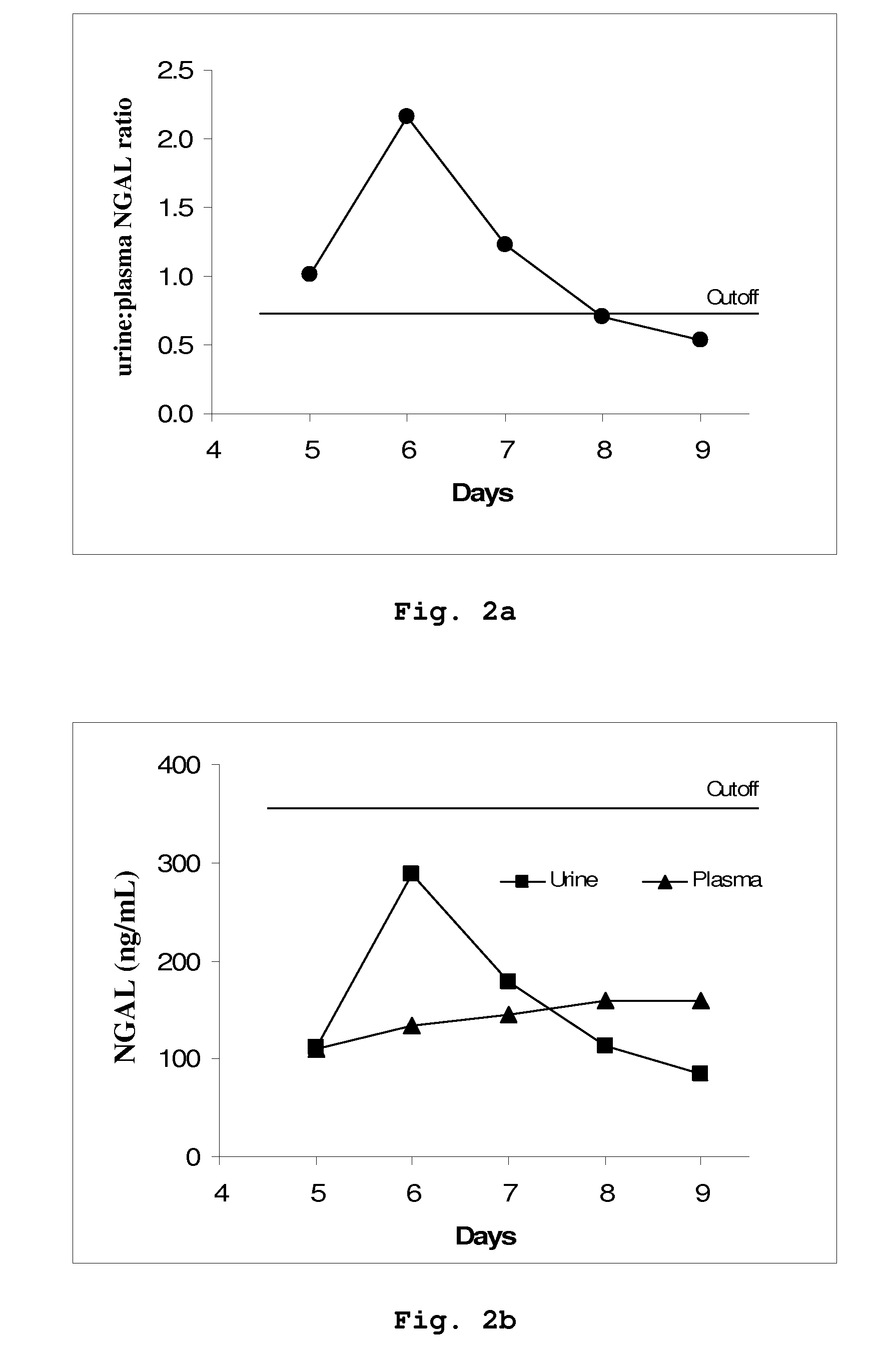Diagnostic Test for Renal Injury
a technology for diagnosing renal injury and detecting the injury, applied in the direction of instruments, biochemistry apparatus and processes, material analysis, etc., can solve the problems of false positive diagnosis and other problems, and achieve the effects of satisfactory analytical specificity, sensitivity and precision, and greater diagnostic specificity
- Summary
- Abstract
- Description
- Claims
- Application Information
AI Technical Summary
Benefits of technology
Problems solved by technology
Method used
Image
Examples
example 1
Diagnostic Power with Respect to ARF or ARD of the Urine:Plasma NGAL Concentration Ratio in 458 Paired Urine and Plasma Samples from 90 Adult Patients Admitted to Intensive Care
[0053]NGAL was determined (by means of an NGAL ELISA kit providing the sandwich ELISA described in Example 5) in 458 paired samples of urine and plasma collected each morning from a total of 90 patients admitted to a hospital intensive care unit. On the basis of discharge summaries and the results of routine blood tests, the patients were classified (blindly with respect to NGAL data) into those with one or more episodes of ARF or ARD during their admission (37 patients, giving 192 paired samples associated with episodes of ARF or ARD at the time of sampling or 24 hours later) and those without episodes of ARF or ARD (53 patients, 266 paired samples). The median urine:plasma NGAL concentration ratio in the sample pairs associated with an episode of ARF or ARD was 3.18 (range 0.33 to 40.02), while that in samp...
example 2
NGAL Dipstick Test
[0056]The analytical area of a dipstick comprised of a polystyrene surface is coated with a capture antibody against human NGAL. An aliquot of the centrifuged, diluted sample is added to a solution of enzyme-labeled detection antibody against NGAL in the first tube, into which the dipstick is immersed. Complexes of enzyme-labeled detection antibody with NGAL are bound to the dipstick, which is then washed with tap water and placed in a chromogenic substrate solution in a second tube. The color developed in the substrate solution within a given time is read either by eye and compared with a chart of color intensities which indicates the concentration of NGAL in the urine sample, or in a simple calorimeter that can, for example, be programmed to indicate the NGAL concentration directly.
example 3
NGAL Lateral Flow Device
[0057]A lateral flow device comprised of a strip of porous nitrocellulose or other material with channels capable promoting the migration of liquid by capillary forces is coated near its distal end with a capture antibody against NGAL applied as a transverse band. A further transverse band of antibody against antibodies of the species from which the detection antibody is derived is placed distally to the capture antibody band and serves as a control of strip function. The proximal end of the strip contains the detection antibody against NGAL adsorbed or linked to labeled polystyrene particles or particles of dye complex. When an aliquot of the centrifuged or filtered sample is applied to the proximal end of the strip, the labeled particles attached to detection antibody travel along the strip by capillary attraction. When reaching the band of capture antibody, only those particles which have bound NGAL in the sample will be retained, giving rise to a detectab...
PUM
| Property | Measurement | Unit |
|---|---|---|
| concentration | aaaaa | aaaaa |
| concentration | aaaaa | aaaaa |
| concentration | aaaaa | aaaaa |
Abstract
Description
Claims
Application Information
 Login to View More
Login to View More - R&D
- Intellectual Property
- Life Sciences
- Materials
- Tech Scout
- Unparalleled Data Quality
- Higher Quality Content
- 60% Fewer Hallucinations
Browse by: Latest US Patents, China's latest patents, Technical Efficacy Thesaurus, Application Domain, Technology Topic, Popular Technical Reports.
© 2025 PatSnap. All rights reserved.Legal|Privacy policy|Modern Slavery Act Transparency Statement|Sitemap|About US| Contact US: help@patsnap.com



